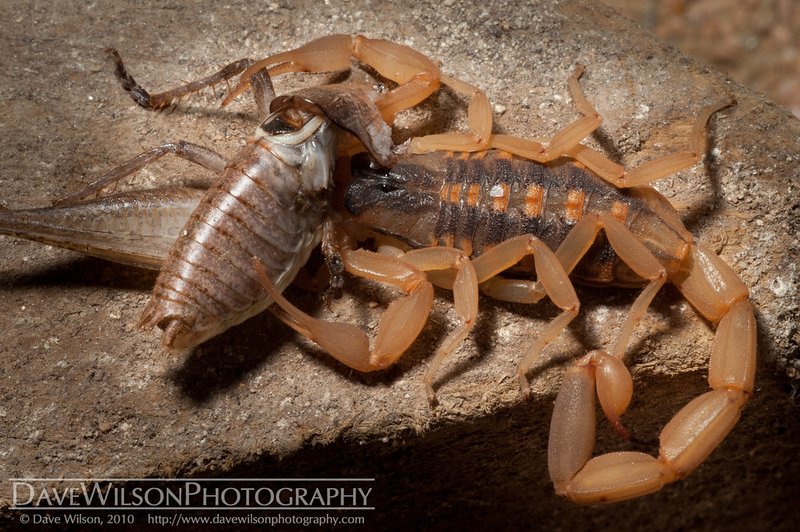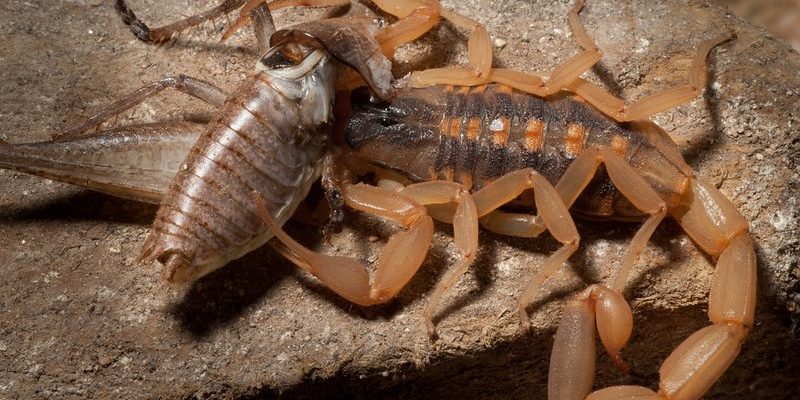
Keeping a striped bark scorpion can feel a bit like taking on a science project—both rewarding and educational. With the right knowledge, you can create an enriching habitat, learn about their diet, and understand how to care for them properly. So, pour yourself a cup of coffee (or tea) and let’s dive into the world of these scorpions together!
Understanding the Striped Bark Scorpion
The striped bark scorpion, known scientifically as *Centruroides vittatus*, is a small species native to North America. They typically grow to about 2-3 inches long, making them a manageable size for a pet. Visually, these scorpions are striking, with yellowish-brown bodies adorned with distinct dark stripes running down their backs. They are often seen clinging to vertical surfaces, and their slender claws help them navigate their arboreal habitats.
You might be wondering what makes these creatures so popular among exotic pet enthusiasts. For one, they’re relatively easy to care for, especially compared to other exotic pets. Plus, watching them move about their environment can be quite mesmerizing. Just be aware that while they’re not aggressive, striped bark scorpions do possess venom and must be handled with care.
Setting Up the Ideal Habitat
Creating a comfortable habitat for your striped bark scorpion is crucial for its health and well-being. A proper enclosure can mimic their natural environment and help your pet thrive. The ideal setup involves a terrarium that’s at least 10 gallons, with a secure lid, as these little creatures are quite the escape artists!
The substrate you choose is essential. Using about 2-3 inches of a mix of soil, sand, and coconut fiber provides both a great burrowing material and moisture retention. Scorpions enjoy having a place to hide, so integrating some logs, rocks, or commercial hides can create a cozy environment.
Temperature and humidity are also important factors. Aim for a temperature range of 75-85°F during the day and slightly cooler at night. Using a heat mat can help you maintain this climate. For humidity, keeping it around 40-60% is ideal. You can check this easily with a hygrometer, which is a handy tool for any exotic pet owner.
Diet: What Do They Eat?
When it comes to feeding striped bark scorpions, you’ll be pleased to know that they have a fairly simple diet. In captivity, these scorpions mainly feed on insects. Crickets are a popular choice, as they’re readily available and easy to manage. You can also provide them with mealworms or roaches. It’s like a little buffet for your scorpion!
Feeding them live prey is essential, as scorpions are natural hunters. Watching your scorpion stalk and capture its meal can be both educational and entertaining. Just make sure to remove any uneaten food within 24 hours to keep the habitat clean.
You should also supplement their diet with calcium powder a few times a month. This helps prevent any nutritional deficiencies and keeps your scorpion healthy. Honestly, it’s all about balance—much like our own diets!
Handling Your Striped Bark Scorpion
When it comes to handling your striped bark scorpion, caution is key. While they’re not known to be aggressive, they can still sting if they feel threatened. It’s important to remember that these creatures are not like cats or dogs, and their behavior can be unpredictable. If you’re new to handling scorpions, start by observing them closely in their habitat before attempting to pick them up.
If you feel comfortable enough to handle them, use a soft grasp with your fingers or a small scoop. Always support their body and avoid holding them by their tail. Think of it like gently holding a small, delicate package—too much pressure could damage it.
Additionally, it’s best to handle them during their active hours, which are typically in the evening or at night. This is when they’re most alert and less likely to feel threatened. And remember, if you ever feel unsure, it’s perfectly okay to just enjoy watching them in their habitat!
Common Health Issues and How to Prevent Them
Like any pet, striped bark scorpions can face health issues. The good news is that many of these can be prevented with proper care. One common problem is dehydration, which can occur if humidity levels are too low. Signs of dehydration include lethargy and a lack of appetite.
To prevent this, maintain an appropriate humidity level and provide fresh, clean water. You can place a shallow dish of water in their enclosure for them to drink from, but be sure it’s shallow enough to prevent drowning.
Additionally, keeping their habitat clean is crucial. Regularly remove waste and uneaten food to prevent any bacterial growth. A quick weekly cleanup can go a long way in keeping your scorpion healthy. If you ever notice unusual behaviors like molting problems or stress, don’t hesitate to consult a veterinarian who specializes in exotic pets.
The Lifespan of Your Striped Bark Scorpion
You might be surprised to learn that striped bark scorpions can live quite a long time in captivity. On average, they can live anywhere from 5 to 7 years, sometimes even longer with excellent care. This longevity means that bringing one of these creatures into your home is a long-term commitment—similar to adopting a dog or cat.
To ensure a long and healthy life, continue providing them with a balanced diet, clean habitat, and proper temperature and humidity conditions. Think of it as nurturing a delicate relationship: the more attention and care you give, the more rewards you’ll reap in the form of a happy, thriving pet.
Final Thoughts on Keeping Striped Bark Scorpions
Keeping a striped bark scorpion as a pet can be an incredibly rewarding experience if you’re keen to learn and provide the right care. These unique creatures offer a glimpse into a fascinating part of nature, and with the right habitat, diet, and handling, they can thrive in your home.
Remember, the key to a happy scorpion is understanding their needs and respecting their space. They might not be the cuddliest of pets, but the joy of observing their behaviors and watching them flourish makes the journey worthwhile. So, if you’ve been thinking about diving into the world of exotic pets, the striped bark scorpion could be a great choice for you!

